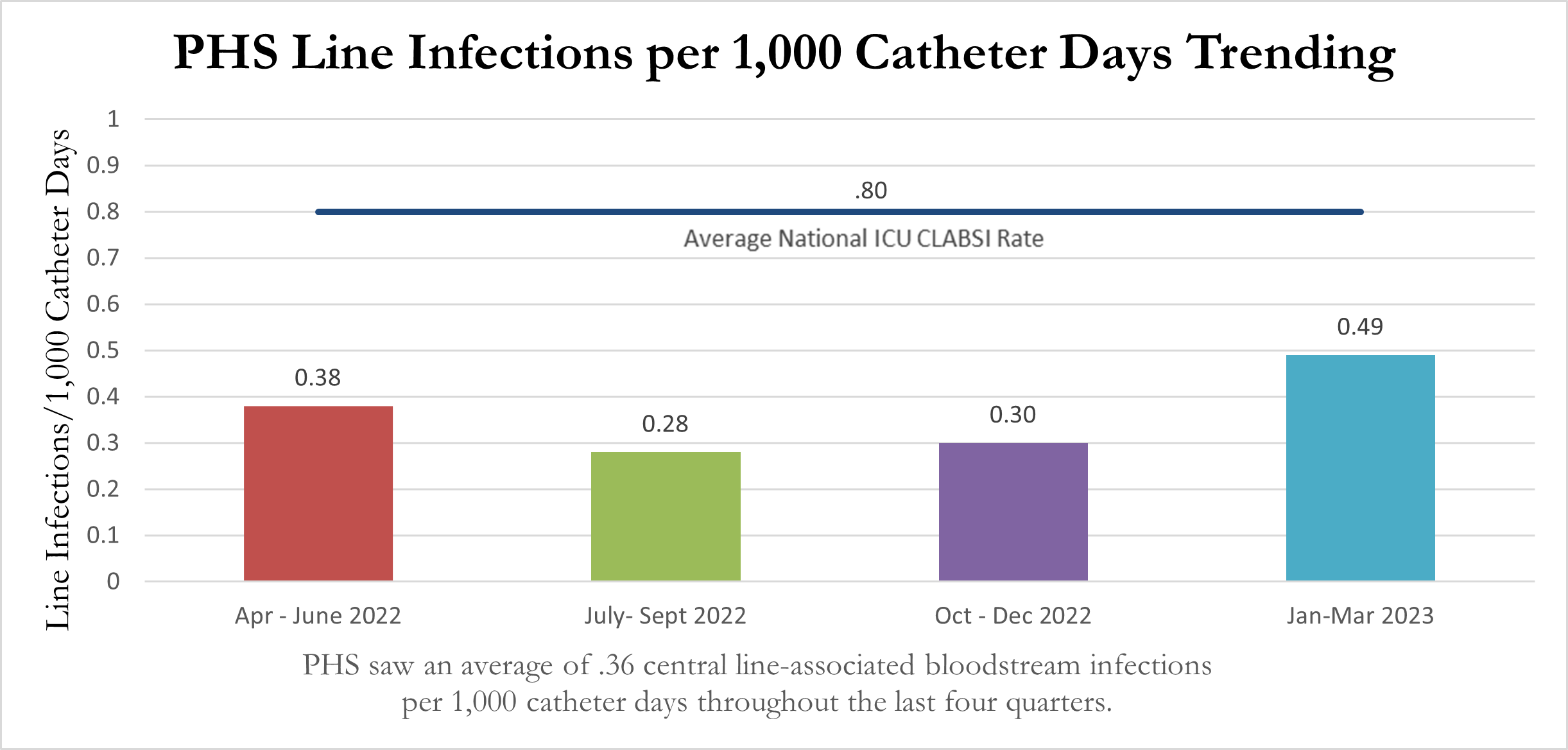Central Line-Associated Bloodstream Infection (CLABSI) Rates
Central lines, also known as intravascular catheters, are placed near the heart in large vessels. These catheters may be placed surgically or percutaneously for long- or short-term use, respectively. They are used to draw blood for lab testing and for infusion of drugs and IV nutrition.
Because central lines are in contact with the blood and circulatory system, they provide a potential portal for opportunistic bacterial infections. Central line-associated infections (CLABSIs) are estimated by the Centers for Disease Control and Prevention (CDC) to occur 250,000 times a year in the U.S. Episodes of CLABSIs increase mortality, health care utilization and costs, and prolong hospitalization.
In one study of 50,000 home health patients, the CLABSI rate was 0.19 infections per 1,000 catheter-days. Another home care study revealed a CLABSI rate of 0.99 per 1,000 catheter-days. Hospital CLABSI rates are generally higher, representing increased acuity of inpatients.

Pediatric Home Service has been tracking the incidence of CLABSIs in its patients receiving home IV infusion since 2005. Despite PHS patients being very ill and having complex catheter treatments, the rate of catheter infections is extremely low. Demonstrating a decrease in CLABSIs is just one quality measure at PHS confirming better care at a lower cost.
Summary
Bloodstream infections often lead to longer hospital stays, higher costs, and an increased risk of mortality. The rate of catheter infections in the PHS patient population is extremely low and trending downward, despite the acuity of its patients.
Questions?
Click here to contact us.
Clinical Outcomes
Central Line-Associated Bloodstream Infection (CLABSI) Rates
The rate of catheter infections in PHS patients is extremely low, even though many PHS patients are chronically ill and receive complex catheter treatments from PHS.
Education (STAR Kit)
The PHS STAR Kit allows caregivers to continually improve their knowledge of equipment use and be prepared to handle emergencies at home.
Reliability of Staffed HCN Hours
Despite the nursing shortage all hospitals, clinics and home care companies are experiencing, the reliability of PHS home care nurses is high.
Customer Service Outcomes
Shipping Accuracy
PHS’s shipping accuracy is consistently greater than 85 percent.
Customer Satisfaction
PHS is proud to maintain a 4.7/5 star rating between Google ad Facebook reviews.


